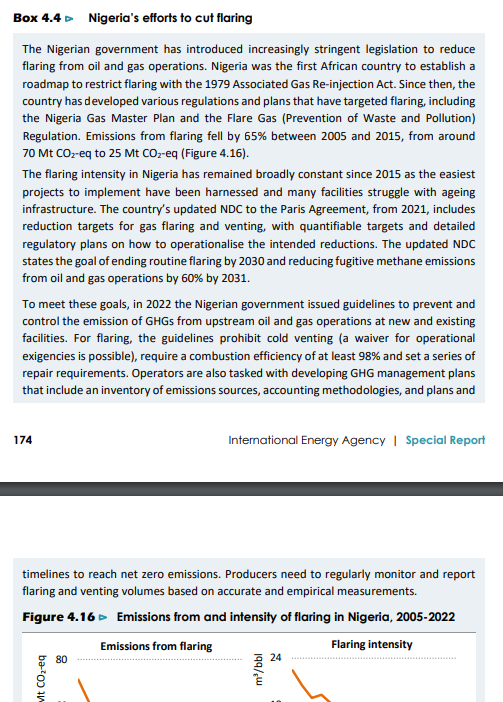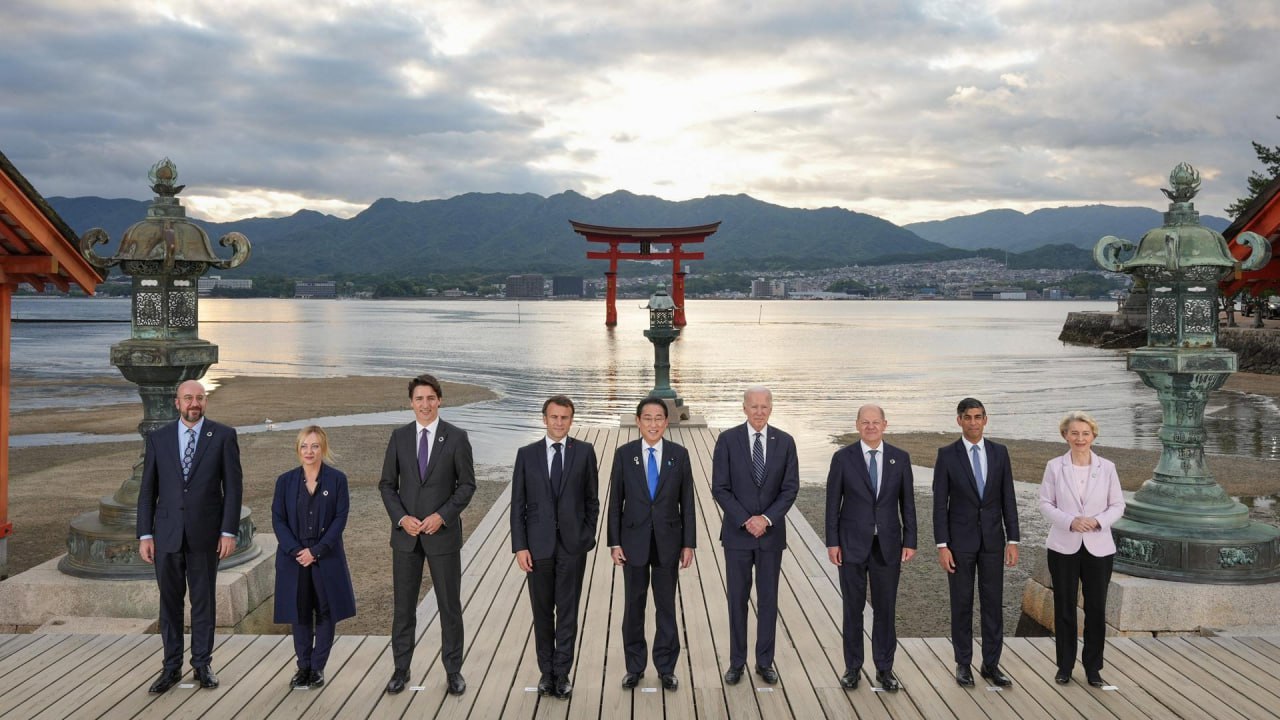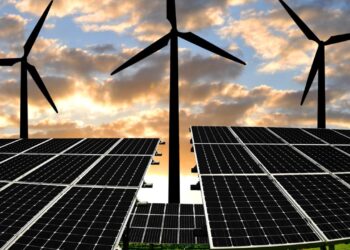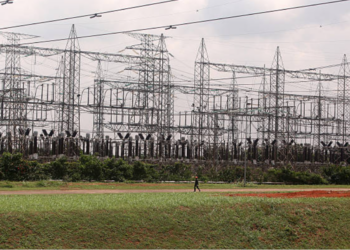Nigeria’s gas flaring intensity has remained constant since 2015.
This is according to the International Energy Agency (IEA).
In its Oil and Gas Industry in Net Zero Transitions report released on November 23, the International Energy Agency (IEA) highlighted the fact that although Nigeria has made substantial efforts to reduce flaring intensity, its efforts have remained broadly constant since 2015.
A part of the report stated:
- “The country has developed various regulations and plans that have targeted flaring, including the Nigeria Gas Master Plan and the Flare Gas (Prevention of Waste and Pollution) Regulation.
- “Emissions from flaring fell by 65% between 2005 and 2015, from around 70 metric tons of carbon dioxide equivalent (Mt CO2-eq) to 25 Mt CO2-eq. The flaring intensity in Nigeria has remained broadly constant since 2015 as the easiest projects to implement have been harnessed and many facilities struggle with ageing infrastructure.”

According to the report, the Nigerian government has shown commitment by enacting increasingly stringent legislation aimed at reducing flaring from oil and gas operations.
The report also noted that Nigeria stands out as the first African nation to establish a roadmap restricting flaring through the 1979 Associated Gas Re-injection Act.
However, despite the progress achieved, Nigeria has encountered challenges in maintaining a consistent reduction in flaring intensity since 2015.
This stagnation is primarily due to the utilization of the easiest-to-implement projects and the aging infrastructure of many facilities, posing obstacles to further reductions.
The IEA report stated further that to address these challenges, Nigeria updated its Nationally Determined Contributions (NDC) to the Paris Agreement in 2021.
The revised NDC sets clear targets to end routine flaring by 2030 and aims to decrease fugitive methane emissions from oil and gas operations by 60% by 2031.
To support these goals, the Nigerian government issued guidelines in 2022 to regulate greenhouse gas emissions from upstream oil and gas operations.
These guidelines mandate strict measures to prevent emissions, including prohibiting cold venting, setting combustion efficiency standards, and requiring repair protocols.
Operators are also directed to create comprehensive GHG management plans encompassing emission inventories, accounting methodologies, and timelines for achieving net-zero emissions.
Regular monitoring and reporting of flaring and venting volumes based on accurate measurements are integral to these plans.
The natural gas context
The IEA report highlighted the varied role of natural gas within Africa’s energy landscape, underscoring its diverse utilization across the continent.
In sub-Saharan Africa, natural gas constitutes a modest 5% of the energy mix, witnessing a gradual rise in domestic usage alongside significant advancements in export-oriented projects.
Among the continent’s top gas producers Algeria, Egypt, and Nigeria—approximately 80% of Africa’s natural gas output is contributed. Over the last decade, Africa has discovered substantial natural gas reserves, totaling around 7,000 billion cubic meters (bcm).
Several nations are now poised for substantial expansions in gas production, with roughly a quarter of these newfound resources already approved for development. This includes significant ventures in Mozambique, Mauritania, and Egypt.
If these projects unfold as envisioned, they could collectively yield approximately 70 bcm of gas annually by 2030. The IEA estimates that the combustion of gas from these sanctioned projects could potentially result in about 10 gigatons (Gt) of cumulative CO2 emissions over the next three decades.
This emission volume roughly equals four months’ worth of current emissions from the energy sector. Africa’s historical contribution to cumulative energy-related CO2 emissions stands at approximately 3%.
Considering the anticipated emissions from burning this gas, Africa’s contribution could climb to nearly 3.5%.
























